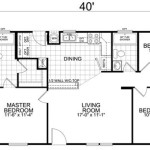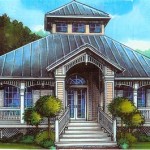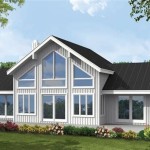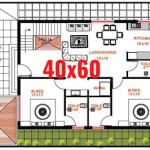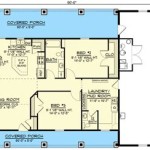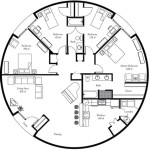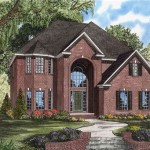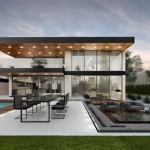Floor Plans With Indoor Pool: A Comprehensive Overview
The integration of an indoor pool into a residential floor plan represents a significant investment in both luxury and lifestyle. Designing a home with an indoor swimming pool requires careful consideration of various factors, including structural integrity, climate control, ventilation, and adherence to building codes. These considerations necessitate meticulous planning and often involve collaboration with architects, engineers, and specialized pool contractors. This article provides a thorough examination of floor plans incorporating indoor pools, focusing on key design elements, construction challenges, and the benefits of this unique architectural feature.
Incorporating an indoor pool dramatically alters the flow and functionality of a home. It transcends the mere addition of a recreational space, fundamentally changing the living environment. The presence of water within the home introduces elements of humidity, temperature regulation, and safety concerns that must be addressed through careful architectural design and ongoing maintenance. The value proposition extends beyond purely economic gains; it provides year-round access to exercise, relaxation, and entertainment, regardless of external weather conditions.
Key Considerations in Indoor Pool Design
Designing a floor plan that effectively integrates an indoor pool requires addressing several critical factors. These include structural requirements to support the pool's weight, efficient ventilation systems to manage humidity, and appropriate heating and cooling systems to maintain a comfortable environment. Furthermore, careful consideration must be given to the aesthetic integration of the pool area into the overall home design, ensuring that it complements the existing architectural style and enhances the living experience.
Structural Integrity: The weight of a filled swimming pool is substantial, and the floor plan must account for this load. Reinforcement of the foundation and supporting structures is crucial, often requiring consultation with structural engineers. The design must ensure that the weight is distributed evenly to prevent stress on the building's framework. Failure to address these structural concerns can lead to significant problems, including cracks in walls and foundations, and even structural failure.
Ventilation and Humidity Control: Indoor pools generate significant humidity, which can lead to mold growth, condensation, and damage to building materials. An effective ventilation system is essential to remove moisture from the air and prevent these problems. Dehumidifiers are often incorporated into the ventilation system to further control humidity levels. The design of the ventilation system must consider the size of the pool area, the water temperature, and the frequency of pool use.
Heating and Cooling Systems: Maintaining a comfortable temperature in the pool area requires a dedicated heating and cooling system. The system must be able to heat the pool water to a comfortable temperature while also maintaining a comfortable air temperature in the pool area. Considerations must be made for energy efficiency, as heating a large volume of water can be energy-intensive. Options include solar heating, heat pumps, and traditional gas or electric heaters.
Material Selection: The materials used in the construction of the indoor pool area must be resistant to moisture and chemicals. Tile, stone, and concrete are common choices for flooring and wall coverings. It is critical to select materials that are non-slip, easy to clean, and resistant to mold and mildew. The selection of appropriate sealants and waterproofing membranes is also crucial to prevent water damage to the surrounding structure.
Common Floor Plan Configurations
Several floor plan configurations are commonly used for homes with indoor pools. The choice of configuration depends on factors such as the size of the home, the desired level of privacy, and the intended use of the pool area. Common configurations range from dedicated pool rooms to integrated designs that incorporate the pool area into the main living spaces.
Dedicated Pool Room: This configuration involves creating a separate room specifically for the pool, often located in the basement or as an addition to the main house. This approach provides a high degree of privacy and allows for better control of humidity and noise. Dedicated pool rooms typically include changing rooms, showers, and restrooms, making them self-contained recreational spaces.
Integrated Design: In this configuration, the pool area is integrated into the main living spaces of the home, such as the living room or family room. This approach creates a more open and social atmosphere, allowing for easy access to the pool from other areas of the house. Integrated designs require careful planning to ensure that the pool area complements the overall aesthetic of the home and that humidity and noise are properly managed.
Greenhouse-Style Enclosures: Another popular option involves enclosing the pool area with a greenhouse-style structure. This approach allows for natural light to enter the pool area while also providing protection from the elements. Greenhouse-style enclosures can be constructed from glass, polycarbonate, or other transparent materials. They often incorporate ventilation systems and shading devices to regulate temperature and humidity.
Indoor/Outdoor Hybrid: Certain floor plans incorporate features that allow the pool area to be opened to the outdoors during favorable weather conditions. This can be achieved through the use of retractable walls, large sliding doors, or other movable architectural elements. Indoor/outdoor hybrid designs provide the flexibility to enjoy the pool area year-round, regardless of the weather.
Addressing Potential Challenges
Despite the numerous benefits of indoor pools, several challenges must be addressed during the design and construction process. These challenges include managing moisture levels, controlling noise, ensuring safety, and complying with building codes and regulations. Overcoming these challenges requires careful planning, skilled craftsmanship, and ongoing maintenance.
Moisture Management: As previously discussed, moisture management is a critical consideration in indoor pool design. Inadequate ventilation and humidity control can lead to mold growth, condensation, and damage to building materials. To mitigate these risks, it is essential to install an efficient ventilation system, use moisture-resistant materials, and regularly inspect and maintain the pool area.
Noise Control: The sound of splashing water and pool equipment can be disruptive to other areas of the home. To minimize noise pollution, it is important to use sound-absorbing materials in the pool area, such as acoustic panels and carpets. The location of the pool equipment should also be carefully considered, and soundproofing measures may be necessary.
Safety Considerations: Safety is paramount in any pool environment, and indoor pools are no exception. Safety features such as pool covers, safety fences, and non-slip surfaces are essential to prevent accidents. The pool area should also be well-lit, and emergency equipment such as life preservers and first aid kits should be readily accessible.
Building Codes and Regulations: The construction of an indoor pool is subject to various building codes and regulations. These codes typically address issues such as structural integrity, ventilation, electrical safety, and water quality. It is important to consult with local building officials and obtain the necessary permits before starting construction.
Operational Costs: Owning an indoor pool will add to the homeowner's operational costs. This includes keeping the water warm, maintaining the water's chemical composition, and the cost of running ventilation and dehumidifying equipment. Homeowners should calculate these costs into their budget before starting construction.
Benefits of Incorporating an Indoor Pool
The benefits of incorporating an indoor pool into a floor plan are numerous. It offers year-round access to swimming and water-based activities, regardless of weather conditions. It provides a private and convenient space for exercise, relaxation, and entertainment. It can also increase the value of the home and enhance the overall living experience.
Year-Round Enjoyment: One of the primary benefits of an indoor pool is that it can be enjoyed year-round, regardless of the weather. This is particularly beneficial in regions with cold winters or hot summers, where outdoor pools are only usable for a limited time. An indoor pool provides a consistent and reliable source of recreation and exercise.
Privacy and Convenience: An indoor pool offers a high degree of privacy and convenience. Homeowners can swim and relax in their own private space, without having to share the pool with others. This is particularly appealing to individuals who value their privacy or who have young children.
Health and Wellness: Swimming is an excellent form of exercise, and an indoor pool provides a convenient way to stay active and maintain a healthy lifestyle. Swimming is a low-impact activity that is gentle on the joints, making it suitable for people of all ages and fitness levels. It can also be a therapeutic activity for individuals with certain medical conditions.
Increased Home Value: A well-designed and properly maintained indoor pool can increase the value of a home. It is a desirable feature that can attract potential buyers and set the home apart from others on the market. The increase in value will vary depending on factors such as the size of the pool, the location of the home, and the overall quality of the design.
Successfully integrating an indoor pool into a residential floor plan demands meticulous planning, adherence to construction standards, and a commitment to ongoing maintenance. Addressing structural, environmental, and safety concerns ensures a functional and enjoyable space for years to come.

Luxury French Country Home Plan With Courtyard And Indoor Pool 290110iy Architectural Designs House Plans

Striking Home Plan With Indoor Pool 72402da Architectural Designs House Plans

Indoor Pool House Mansion Floor Plan Plans

House Plans With Pools Luxury Home Floor Swimming

Contemporary Style House Plan 2 Beds 3 Baths 2283 Sq Ft 60 763 Shed Plans Indoor Pool

Indoor Swimming Pools House Plans And More

House Plans With Pools Luxury Home Floor Swimming

2 Story Modern Home Plan With Indoor Pool 85270ms Architectural Designs House Plans
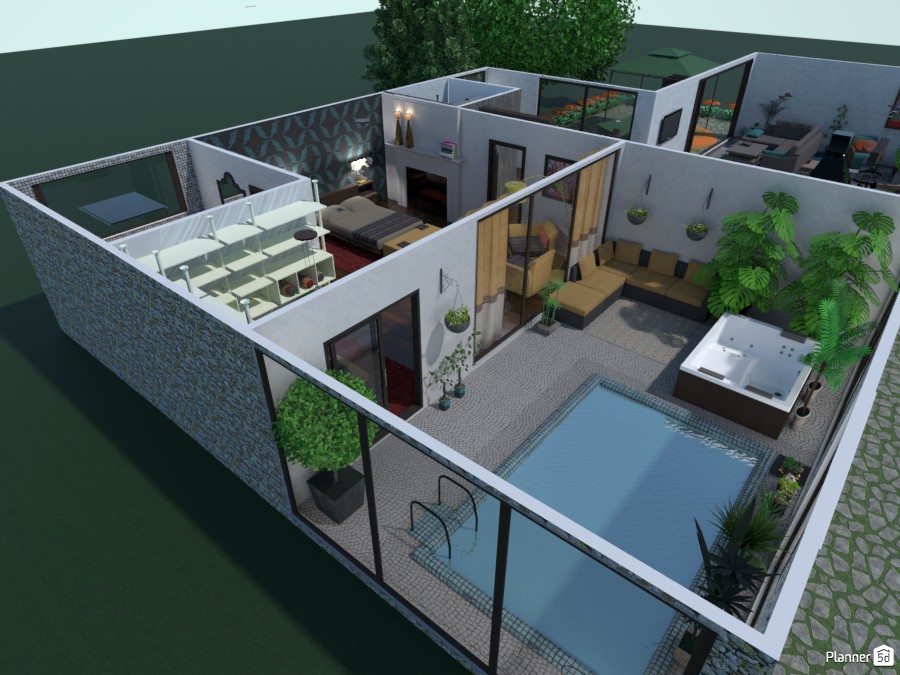
Indoor Swimming Pool And Jacuzzi Area Free Design 3d House Ideas Marina G By Planner 5d

House Plan 4 Bedrooms 3 5 Bathrooms Garage 2851 Drummond Plans

